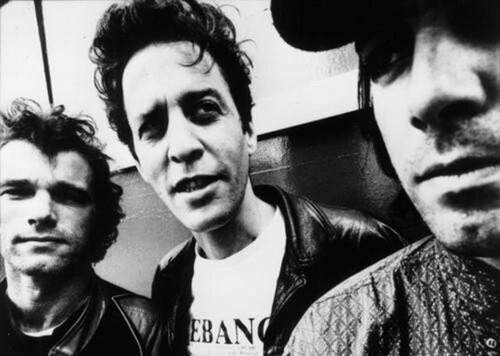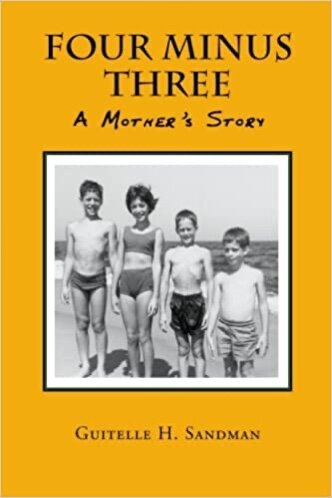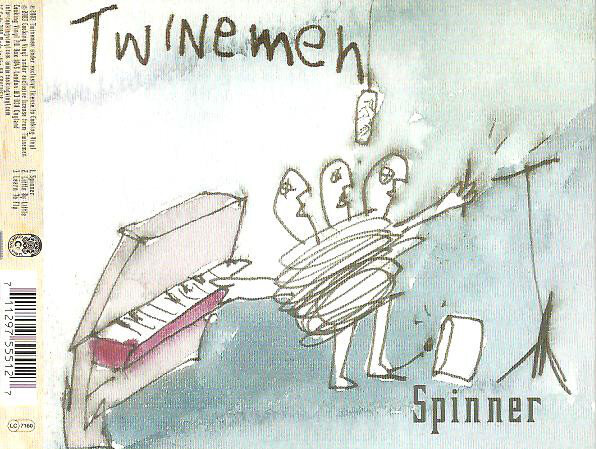MORPHINE
When Mark Sandman died of a heart attack, onstage in Italy, in 1999, while performing with his band Morphine, one of the greatest and most unique bands of their era died too. Mark Sandman was 46. The Massachusetts born band were just 4 albums in, with a 5th following after Mark’s death. Mark - his baritone voice as low hung as a snake’s belly; his bass parts, normally played on one string, slinky and strange. Morphine - their songs simultaneously sexy and sad; Dana Colley’s soaring sax as smokey as any backroom blues hall. Morphine died the day Mark Sandman did. But Vapors Of Morphine rose from the tragedy.
It was an honour to speak to Dana for ‘Indie Heaven’, and to share that conversation with you…
Well, this is a thrill. Dana, growing up as a fan of Morphine, I would seek out every Morphine interview I could. Most were with Mark. Could you tell me about your route into music?
“My earliest memory is sitting at the piano at about 3-years-old and being fascinated with the sound. Growing up, the family of my best friend - Dave Blauss - became my extended family. They had many instruments in the house and they all played. I would sometimes go to their house and just sit on the couch and play their guitars. Sometimes none of the kids were home. Just me and their mom Edna, who I credit for recognising that I had an ear for music. Amazing woman. Single mother to 7 children. My school had a very strong music program so I got the opportunity to learn clarinet which later moved to tenor in the 7th grade of Middle School. I played tenor all through High School in the marching, concert and jazz bands.”
Children having access to music lessons at school is such a gift. It’s something being ripped from our education system here in the UK.
“After I graduated I went to Mass College of Art in Boston in 1980. This is where I met Chris Harford. We were both in a department called SIM Studio for Interrelated Media. Chris was in a band called Three Colors and they had all come up to Boston to take advantage of the city’s fertile music and art scene. Chris invited me to sit in when Three Colors were playing at a SiM performance - SIM being a performance art program. I jumped up, did some strangled goose sax ala James Chance, then sat down to let them finish their very together and well constructed set. I continued to bug them to find out when they were planning on rehearsing. They put me off for as long as they could until they finally relented and told me they had a rehearsal scheduled in the next week and I could come down. I jumped at that and made myself indispensable as best I could. Playing in a band with 3 songwriters, in Chris [vocals and guitar], Hub Moore [bass] and Max Moore [keyboards], it helped me develop my own understanding of songwriting as well as how best to accompaniment a singer.”
This would be around the time that Mark was playing in Treat Her Right… um… right? How did you come to meet him?
“Actually, the first time I saw Mark it was at The Rat in Kenmore Square. Three Colors and Treat Her Right were on the same bill. He made a big impression on me because he was playing more of a roots blues sound, which was really counter to the post-punk new wave sound of the time. We talked at the gig and sometime after that Mark invited me to come by his apartment in Cambridge with my sax. I did and we jammed a little - at the time he was working on his one string bass which really blended with my baritone. Around this time Treat Her Right were working and I was a huge fan of Billy [Conway, drums, later of Morphine], Jimmy [Fitting, harmonica] and Dave [Champagne, guitarist]. That band were one of the greatest live sounding bar bands in the world. They needed some help on the road and I convinced them to let me go and drive, load gear and tune guitars. They will tell you that I am a better sax player than I am a guitar tech, which led them to inviting me up on stage for a number or two.”
You mention Mark’s one string bass. I always thought that Morphine used ‘space’ brilliantly. What you’re not saying is as important as what you are. Did you ever think about adding an extra string, or a drum, or even a member and a new instrument?
“Well, with recording we’ve always been able to add the instrumentation that we weren’t able to have on stage. We’ve had a musician sit in with us but we’ve always kept to the most stripped down instrumentation because it works best for the music. Space was always very accessible due to the instrumentation. Especially in comparison with a lot of multi-guitar band on a bill. The space becomes another member of the band.”
Your 1992 debut, Good, was an amazing opening statement. It summarised exactly who Morphine were. What are your memories of making that record?
“Good was a collection of songs we had been playing live and decided to put into a recording. We released it independently on Russ Gershon’s Accurate-Distortion label. It initially only came out on cassette - it wasn’t picked up until after Cure For Pain came out on Ryko in 1993…”
I loved the art too.
“That was a clipping Mark had of a Dutch Master. Sandman loved doing collages with cut-out paper to make gig posters, and that was initially a xerox copy. Maybe even an early scan.”
What was the experience of signing with Rykodisc like?
“Signing with Ryko worked in our favour because they had a large distribution and were releasing a lot of re-issue catalogue. We were the only live group that were out on the road performing. Cure for Pain got to a lot of people due to Ryko's great distribution, combined with the appetite at the time for this new, mind-blowing format called the compact disc! The sound of Cure for Pain was a beautiful merger of analogue and digital. Recorded by the incomparable Paul Q. Kolderie on 2" tape, then mastered onto a digital platform, really perked the ears up when hearing it for the first time.”
Man… Pixies, Buffalo Tom, Lemonheads, Dinosaur Jr., even the first Radiohead album. Paul Q. Kolderie has worked with so many bands and on so many records I love…
“Paul is a genius producer musician and just a hell of a nice guy to hang out with. Fort Apache was a great place to hang out too, with great music coming in and out of there at all hours of the day. Paul really worked hard to get our sound as pristine as could be. He’s a master at editing and constructing solos by virtue of multiple punch-ins. And he’s a true master at getting drum sounds. He’s got an overall understanding of what is necessary to make the mix work. You can't say enough great things about Paul.”
Around this time you got the Beavis and Butt-head treatment! There’s so many Morphine songs on cool movie soundtracks from that time too!
“It was great! I loved it. We loved Jon Stewart so the fact that they compared Mark to Jon was pretty cool. We did have a brilliant music supervisor with Ryko who really got the music. And around that time, filmmakers were looking to the culture for music for their films. The timing was really good.”
I wasn’t cool enough to come to Morphine until Like Swimming in 1997 - I was sixteen-years-old. I’d never heard anything like it! Then I worked backwards. Again, I love the cover art…
“For the cover we went out to Mark’s parents house with a photographer and a underwater camera. Then we took over their pool by jumping in with all our clothes on. They were very supportive of the artistic endeavor.”
It was also your first record for DreamWorks Records, the label set up by David Geffen, Steven Spielberg and former Disney chairman Jeffrey Katzenberg…
“DreamWorks was a blessing and a curse. It allowed us some financial freedoms, but it also put a lot of stress on our process. Previous to signing with DreamWorks we were left to put out what we wanted without having to undergo any type of critique from the label. Mark was under a lot of stress to produce a record that was going to put us into the next league. The label wanted us among Beck and that sort of crowd. Mark felt responsible for producing a big hit for them. It lead to a lot of fractious feelings between Mark, Billy and myself. We never were sure if we were going to be in the band. When push came to shove Mark succeeded in producing the basic tracks that he was ultimately pleased with. And we succeeded in having both Billy Conway and Jerome Deupree both playing drums at the same time.”
Speaking of Jerome Deupree; he was in and out of Morphine - and indeed, Vapours of Morphine. Was that because of the pain in his hands? Has he recovered now?
“Jerome has always had issues with his hearing. He’s got tinnitus in his ears and tendonitis in his arms. He’s always played in some discomfort. Playing larger stages night after night in Europe with Vapors Of Morphine on our last tour took its toll. The shear volume of a rock production with low frequency subwoofers, combined with loud electric sax and guitar was a lot. As critical as Jerome is to the sound we want him to take care of his well-being. He stepped down to allow the amazing Tom Arey to join in. We’re releasing a vinyl recording on Schnitzel Records in 2021. Both Jerome and Tom are featured, one each on either side.”
It always sucks when illness stops someone doing something they love, especially when they’re so good at that thing…
“Prior to the pandemic, Jerome had been taking his pick of gigs and playing close to home and hosting drum sessions at his house. In the warmer months he hosted outdoor socially distanced jams in his back garden. They can be found on his Facebook page. He is a true master of the drums.”
The documentary Cure For Pain: The Mark Sandman Story was released in 2011. I really liked it. Do you like it?
“There are actually two documentaries. Cure for Pain, made by Mark’s cousin Jeff Broadway along with Robert Bralver. The other was made by a good friend and was called Journey of Dreams. The first centred around Mark’s family story - understandably because his family were making the film - and I think it was good. Journey of Dreams is far more extensive in terms of the story of the band. The production that went into it was far more professional. It was directed, shot, compiled and edited over 5-years by the very talented Mark Shuman.”
What kind of relationship do you have with Mark’s family? I keep meaning to read his mother’s book, Four Minus Three: A Mother’s Story…
“I made a point to try to maintain a good relationship with Mark’s family. They’ve been incredibly generous and willing in working with whatever release or project we might have in the works.”
Can we talk a bit more about Mark? So much has been made of Mark’s secrecy - his desire to keep his life private. Do you think that was mythos making? Or insecurity? I believe you only found out about the - pretty fucking tragic - passing of his brothers after some years?
“Mark was a private person who was a public persona so it was important for him to protect himself, protect his family and protect his friends by keeping much of his life private. Mark told me about his brothers pretty early on but he didn’t really go into much detail regarding how they died. I always respected his privacy and figured he would tell us what he wanted us to know when the time was right. I never really inquired about lyrics or anything like that. I was interested in producing a unified sound and whatever Mark wanted to sing about was fine with me. I think that stuff is best left to the imagination in most cases. What’s the genesis of any song idea could be different for everybody - that’s a beauty of it.”
Tell me about Twinemen, both the band and the comic?
“After Mark passed away, Billy and I were working on a Laurie Sargent [from Face To Face] solo record, and the more we did the more we realised that it was actually a project onto itself. It was turning into a band effort more than a solo project. In truth, Laurie saved us, because both Billy and I needed to be busy playing. She really nurtured us through a tough time. We named the band after Mark’s cartoon called Twinemen. Which is a ball of twine with 3 heads sticking out of it. To signify what it’s like to be in a band with lives intertwined.”
I won’t ask you revisit the night that Mark died. It’s covered extensively elsewhere. I would be interested however in knowing what the experience of putting together the 5th and final album, The Night. It was released after Mark had passed.
“The record had been recorded and mixed, so all we needed to do was master it, produce the artwork and work out the sequencing. Billy and I had a lot to work with. It was just a matter of bringing it in to the finish. Mark died on July 3rd, 1999. The record came out in February the following year. Dreamworks didn't really want anything to do with it or what we brought to the table. Fair enough. We weren’t Beck. But Orchestra Morphine toured that year and returned to Palestrina, Italy to play Nel Nome del Rock on July 3rd, 2000. A year to the day on the spot where Mark played and died. The town is like extended family. We’ve returned many times since.”
Orchestra Morphine, Member of Morphine, Vapors of Morphine; I’m so pleased you did all those bands that kept the songs alive. It put some light where so much sadness was. When Mark died, did you feel a duty to create a legacy for Morphine?
“Initially after Mark died I felt a responsibility to keep the music going. It was the thing we created together and poured our life into. I wanted to make sure that The Night was heard by a live audience too. The show must go on! With the help of 8 other musicians we put together Orchestra Morphine and toured the U.S., before getting back to Palestrina. That was our main goal - getting the music heard. Vapors of Morphine came out of an invitation to go back and play in Palestrina. We decided to go as a trio and invited my good friend Jeremy Lyons to learn some Morphine songs. He did and we’re still at it. We’ve got the aforementioned record coming out and we hope to be back out on the road once this pandemic is under control.”
I will catch one of those shows. Thank you Dana, this has been a pleasure. What do you think Mark Sandman’s legacy is?
“if you have enough passion for the things that you love, then there’s nothing to get in your way. Make something happen. Do it yourself.”





